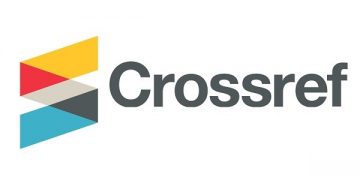Deteksi Dini Faktor Risiko Penyakit Tidak Menular melalui Pemeriksaan Gula Darah dan Kolesterol Serta Edukasi Pola Hidup Sehat pada Masyarakat di Kelurahan Kampung Bandar
DOI:
https://doi.org/10.61722/jmia.v2i5.6519Keywords:
Non-Communicable Diseases, Blood Glucose, Cholesterol, Health Education, Kampung BandarAbstract
Non-Communicable Diseases (NCDs) such as diabetes mellitus and dyslipidemia have become a major public health challenge. The increasing prevalence of NCDs is largely influenced by unhealthy lifestyles, including high consumption of fatty and sugary foods, lack of physical activity, and low awareness of routine health check-ups. Early detection and health education play a crucial role in preventing NCD-related complications. This study aims to identify blood glucose and cholesterol levels among the community in Kampung Bandar Village and provide health education on healthy lifestyles. A descriptive quantitative method was applied to 50 respondents using random blood glucose and total cholesterol examinations. The results showed that the majority of respondents were categorized as prediabetes to diabetes for blood glucose levels, and borderline high to high for cholesterol levels. The health education emphasized the importance of balanced diet, regular exercise, and periodic health check-ups. This activity is expected to increase community awareness of the importance of early detection and lifestyle modification in preventing NCDs.
References
American Diabetes Association. (2022). Standards of medical care in diabetes—2022. Diabetes Care, 45(Supplement_1), S1–S264. https://doi.org/10.2337/dc22-SINT
Jannah, N., & Putri, S. (2022). Health education as an effective strategy in preventing non-communicable diseases: A community-based approach. Journal of Public Health Research, 11(2), 123–130. https://doi.org/10.4081/jphr.2022.1230
Juwita, A., Raharjo, S., & Sari, R. (2021). Prevalence and risk factors of dyslipidemia in urban communities in Indonesia. BMC Public Health, 21(1), 1–9. https://doi.org/10.1186/s12889-021-11012-4
Nugraha, F., Santoso, H., & Lestari, D. (2021). Early detection of diabetes mellitus through community-based screening. Indonesian Journal of Public Health, 16(3), 250–258. https://doi.org/10.20473/ijph.v16i3.2021.250-258
Rahman, A., Dewi, R., & Yusuf, M. (2022). Dyslipidemia prevalence and its associated factors among adults in Indonesia. Nutrients, 14(8), 1593. https://doi.org/10.3390/nu14081593
World Health Organization. (2021). Classification of diabetes mellitus. Geneva: WHO Press.
World Health Organization. (2022). Noncommunicable diseases: Key facts. https://www.who.int/news-room/fact-sheets/detail/noncommunicable-diseases
National Cholesterol Education Program (NCEP). (2020). Third report of the National Cholesterol Education Program (NCEP) expert panel on detection, evaluation, and treatment of high blood cholesterol in adults (Adult Treatment Panel III). NIH Publication No. 20-5215.
Riskesdas. (2023). Hasil utama riskesdas 2023. Badan Penelitian dan Pengembangan Kesehatan, Kementerian Kesehatan RI.
Downloads
Published
Issue
Section
License
Copyright (c) 2025 JURNAL MULTIDISIPLIN ILMU AKADEMIK

This work is licensed under a Creative Commons Attribution-ShareAlike 4.0 International License.











